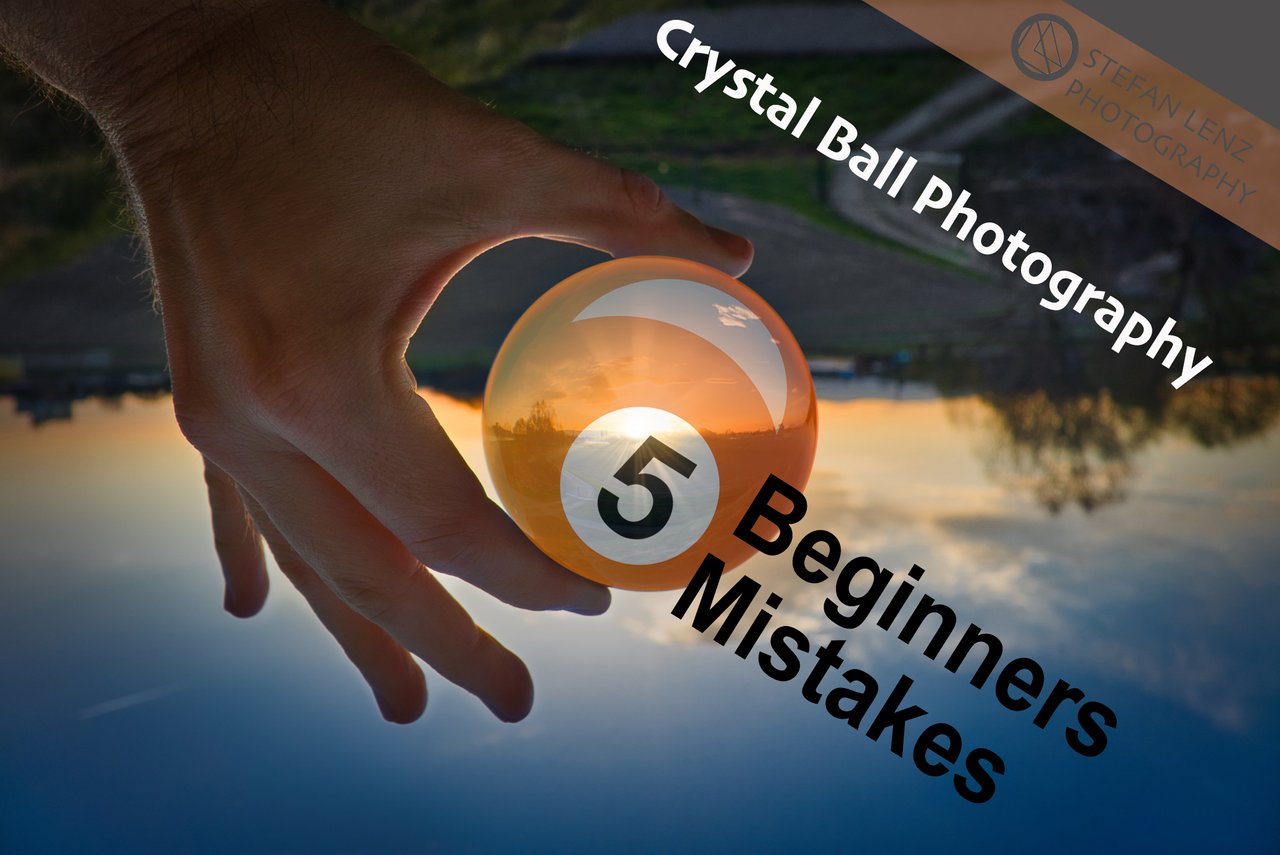
Hey guys! Hardly anyone who is interested in photography is currently passing by the topic of "crystal ball photography" and more and more people discover this exciting type of photography for themselves. This is also reflected in the number of members of various Facebook groups. On the one hand it makes me happy, but on the other hand I always see the same mistakes among many beginners. That's why I decided to write this article to save you from the 5 most common beginner mistakes in crystal ball photography right from the start, or to help you if you already make the mistakes unconsciously!
Hallo Leute! Kaum jemand, der sich für Fotografie interessiert, kommt zur Zeit am Thema „Glaskugel-Fotografie“ vorbei und immer mehr Leute entdecken diese spannende Art der Fotografie für sich. Das spiegelt sich auch in der Anzahl der Mitglieder diverser Facebook-Gruppen wieder. Einerseits freut es mich, doch andererseits sehe ich bei vielen Anfängern immer die gleichen Fehler. Deshalb habe ich mich dazu entschlossen, diesen Artikel zu schreiben, um euch gleich von Beginn an vor den 5 häufigsten Anfängerfehlern in der Glaskugel-Fotografie zu bewahren oder euch zu helfen, wenn ihr die Fehler bereits unbewusst macht!
1.) Bad image composition/Schlechte Bildkomposition
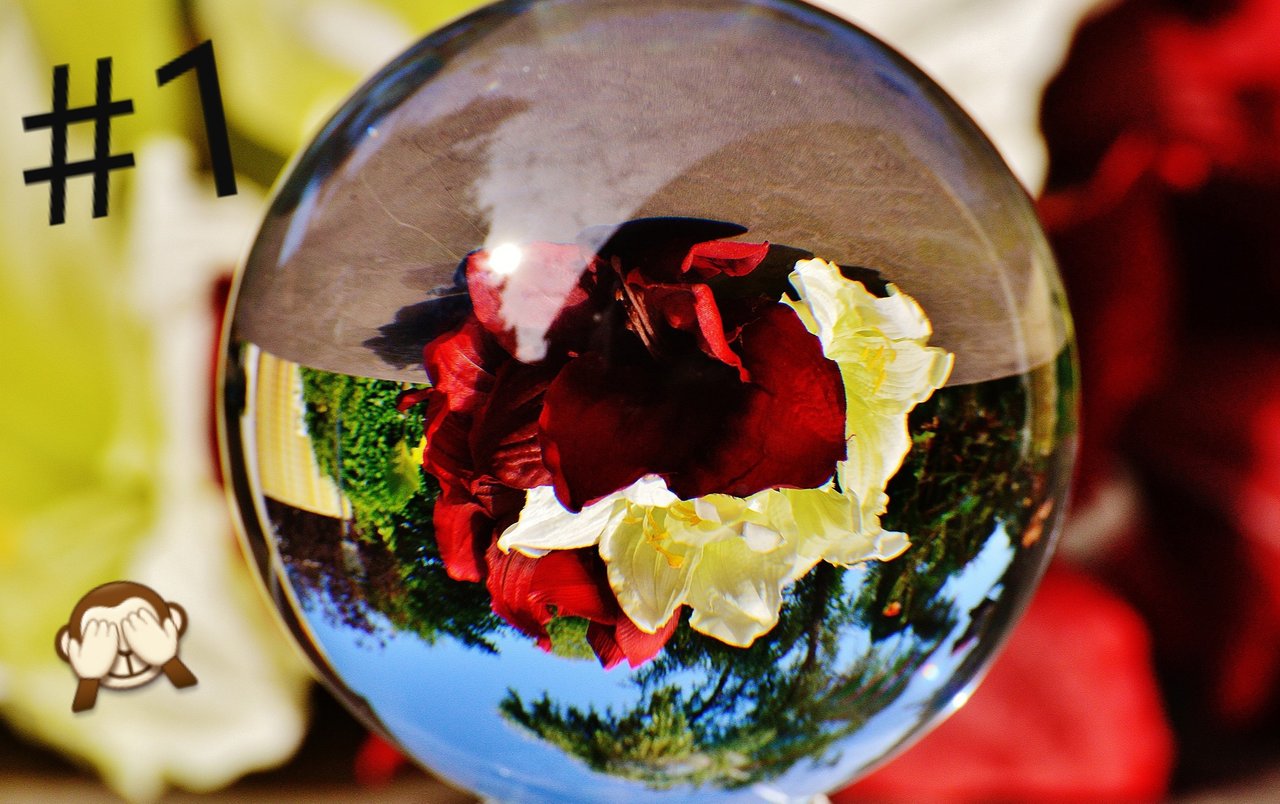
Many crystal ball photographers make the mistake of showing the ball way too large in their photos. Often the ball fills the entire image format, or part of the ball is even cut off at the top/bottom. In this regard, less is clearly more! A small pictured ball usually has a much stronger effect on the viewer. Another common mistake is the placement of the ball. It does not always have to be exactly in the middle of the picture, but my recommendation would be to center the glass ball at least on the horizontal or vertical axis.
Viele Glaskugel-Fotografen machen den Fehler, die Kugel auf ihren Fotos viel zu groß abzubilden. Oft füllt die Kugel das gesamte Bildformat aus oder es wird oben/unten sogar ein Teil der Kugel abgeschnitten. Dabei ist in dieser Hinsicht ganz klar weniger mehr! Eine klein abgebildete Kugel hat meist eine viel stärkere Wirkung auf den Betrachter. Ein anderer häufiger Fehler passiert bei der Platzierung der Kugel. Sie muss zwar nicht immer genau in der Mitte des Bildes sein, aber meine Empfehlung wäre, die Glaskugel zumindest auf der horizontalen oder vertikalen Achse zu zentrieren.
2.) Too eye-catching stand/Zu auffälliger Ständer
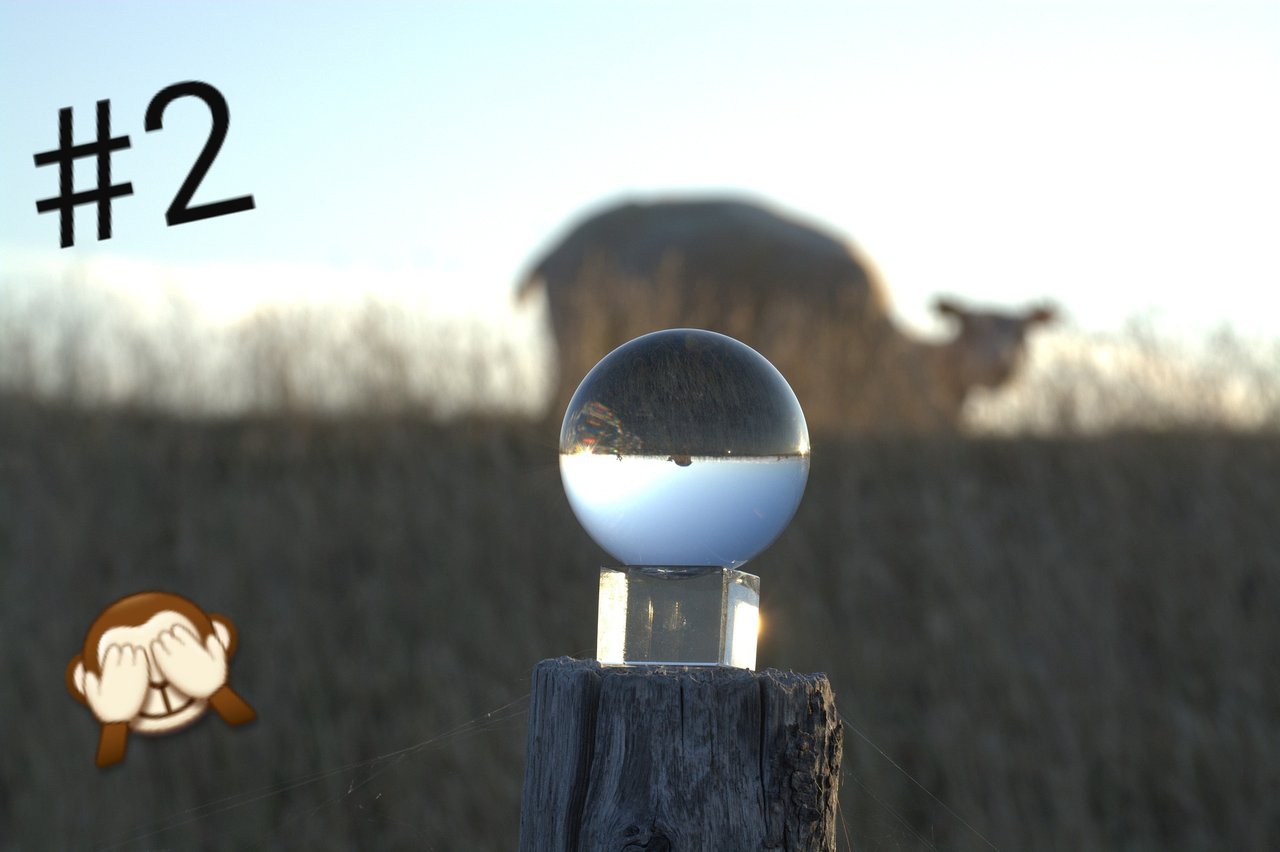
Many manufacturers deliver a glass stand together with the ball, which is practical, but looks like a foreign object on photos. Please do yourselves a favor and leave such stands at home. Instead, look for a natural stand or use inconspicuous tools such as small sealing rings. A glass ball stand should be as inconspicuous as possible.
Viele Hersteller liefern einen Glasständer zusammen mit der Kugel aus, der zwar praktisch ist, aber auf Fotos wie ein Fremdkörper wirkt. Bitte tut euch selbst einen Gefallen und lasst derartige Ständer zuhause! Sucht euch stattdessen einen natürlichen Stand oder verwendet unauffällige Hilfsmittel, wie zum Beispiel kleine Dichtungsringe. Ein Glaskugel-Ständer sollte so unauffällig wie möglich sein.
3.) Inaccurate focus/Ungenauer Fokus
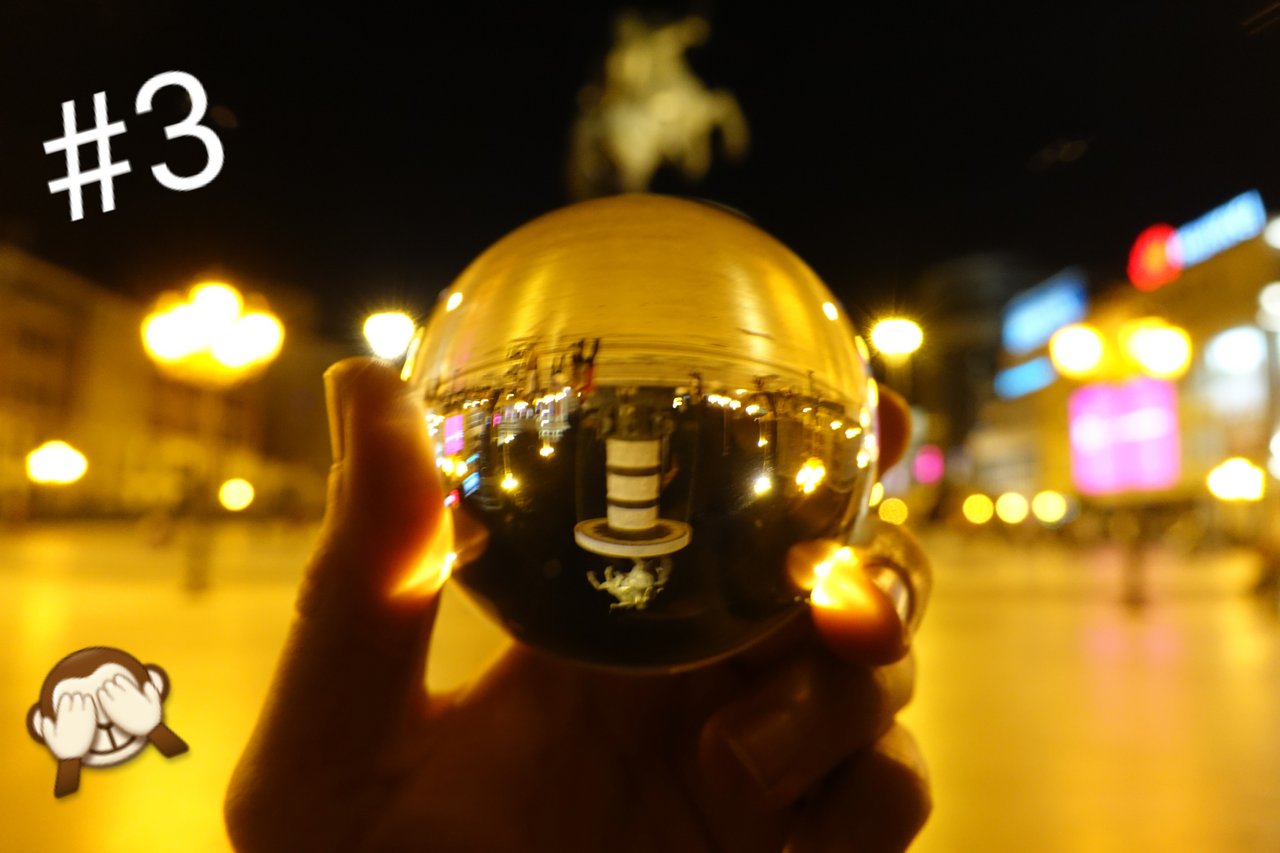
A basic rule of crystal ball photography is that the ball must always be in focus. The background, on the other hand, can be slightly or even very blurry. Beginners often use the autofocus of their camera or phone, which is unfortunately not accurate enough in some cases. If you have problems with the autofocus, switch to manual focus to capture the ball sharply! Also, the aperture should not be too large to focus the entire ball.
Eine Grundregel der Glaskugel-Fotografie ist, dass die Kugel immer im Fokus sein muss. Der Hintergrund kann dagegen gerne leicht oder sogar sehr stark verschwommen sein. Anfänger verwenden oft den Autofokus ihrer Kamera oder ihres Handys, der in manchen Fällen leider nicht genau genug ist. Falls ihr mit dem Autofokus Probleme habt, wechselt in den manuellen Fokus, um die Kugel scharf abzubilden! Auch die Blendenöffnung sollte nicht zu groß sein, um die gesamte Kugel scharf abzubilden.
4.) Too much post-processing/Zu viel Nachbearbeitung
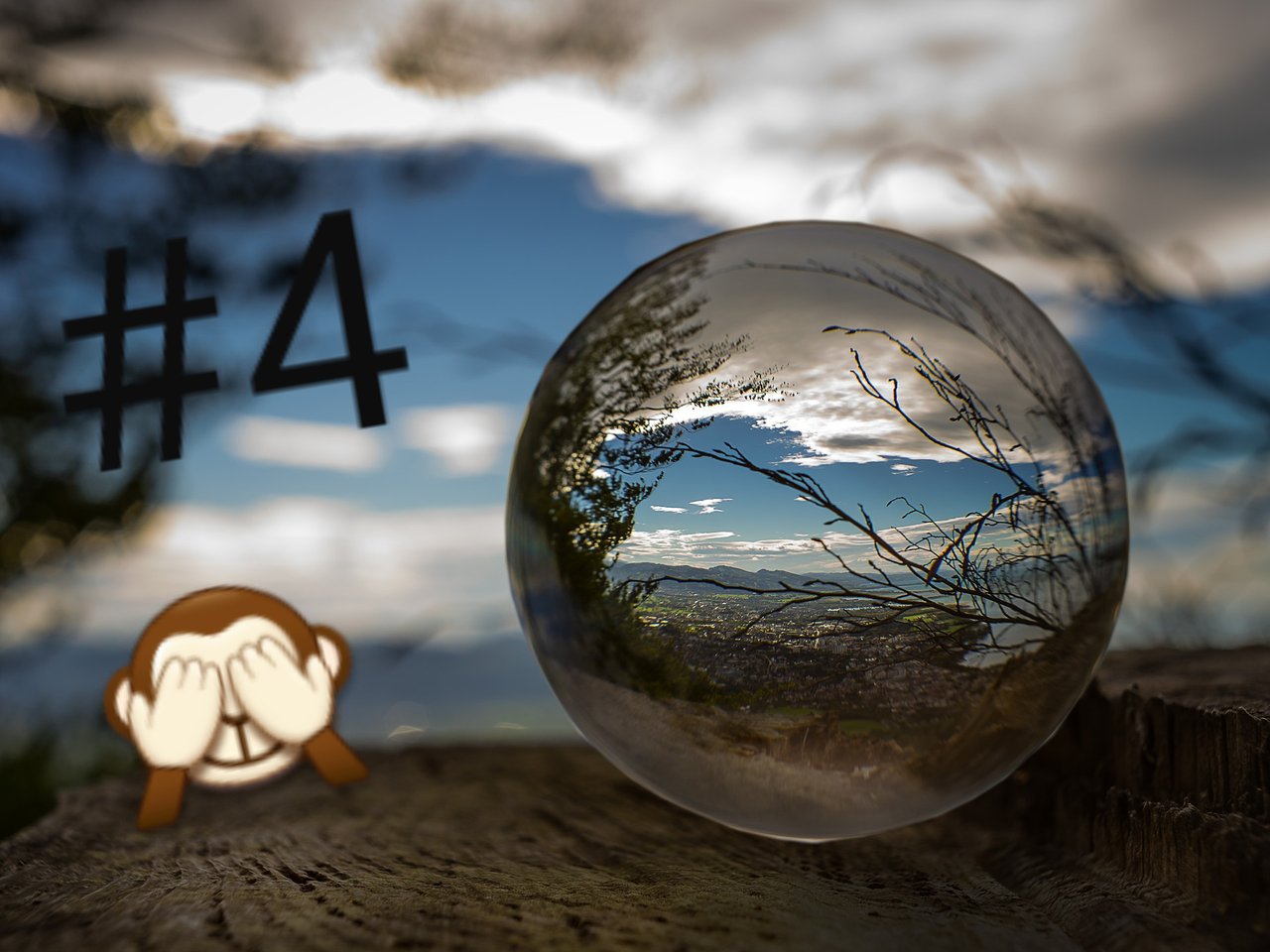
Any photographer who discovers Lightroom or other image editing programs for himself tends to push the sliders far too high. This especially concerns clarity, sharpness and contrast. Glass balls are particularly sensitive to this and immediately look unnatural if you overdo it. What I also see very often are balls rotated by Photoshop. If you don't really know Photoshop well, don't do that! The result often looks anything but great and certainly not natural.
Jeder Fotograf der Lightroom oder andere Bildbearbeitungsprogramme für sich entdeckt, neigt dazu, die Regler viel zu weit nach oben zu schieben. Das gilt besonders für die Klarheit, die Schärfe und den Kontrast. Glaskugeln reagieren darauf besonders sensibel und sehen sofort unnatürlich aus, wenn man es übertreibt. Was ich auch öfters sehe, sind per Photoshop gedrehte Kugeln. Falls ihr Photoshop nicht wirklich gut beherrscht, dann lasst das lieber! Das Ergebnis sieht oft alles andere als toll und schon gar nicht natürlich aus.
5.) Usage of several balls on one photo/Verwendung mehrerer Kugeln auf einem Foto
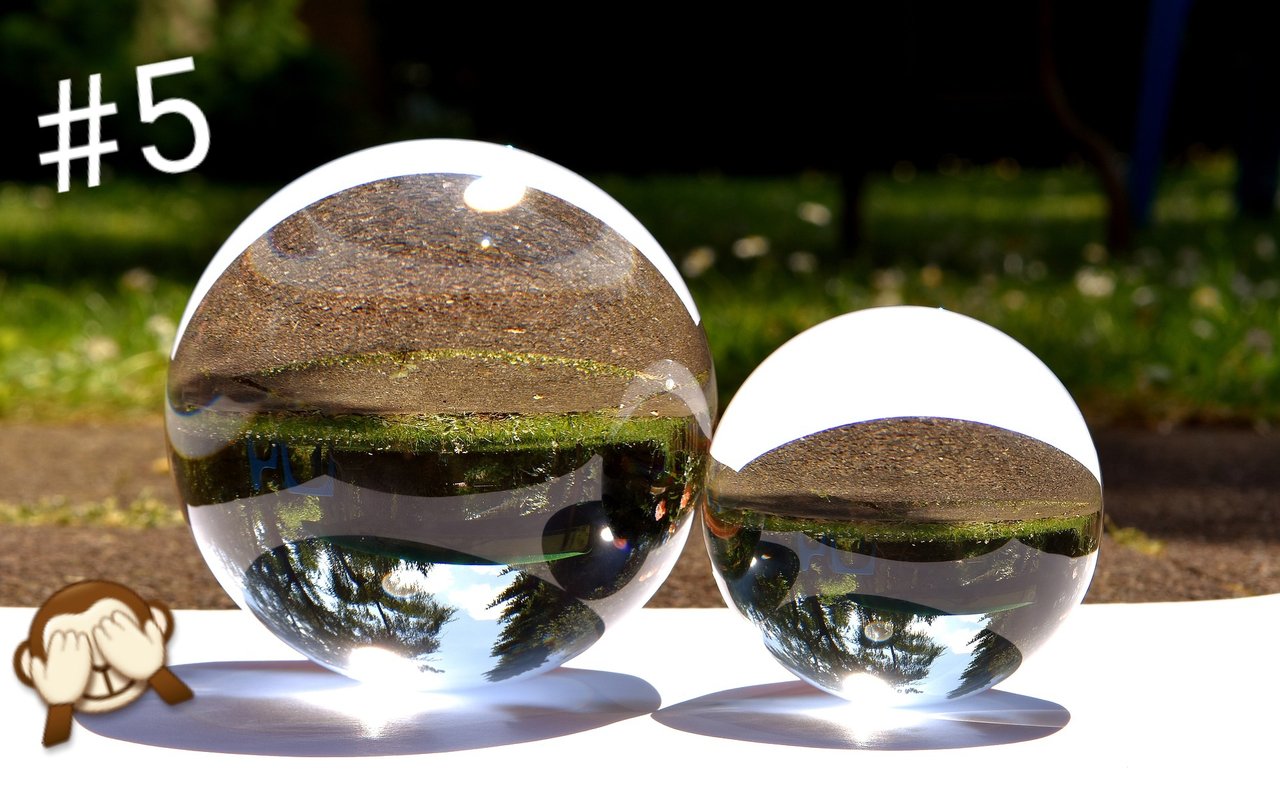
Having more than one glass ball in one photo could be described as inflationary use. I would like to explain this to you with an example. Imagine a city view of Paris. What stands out? The unique Eiffel Tower, of course! Now imagine that there are three or four Eiffel Towers spread across the city. The uniqueness would be lost and there would be nothing that would immediately catch the eye of the viewer of the cityscape. Exactly the same is the case with crystal balls. Also here less is definitely more!
Mehr als eine Glaskugel auf einem Foto zu haben, könnte man als inflationären Gebrauch bezeichnen. Ich möchte euch das anhand eines Beispiels erklären. Stellt euch eine Stadtansicht von Paris vor. Was sticht dabei heraus? Natürlich der einzigartige Eiffelturm! Nun stellt euch vor, es gäbe drei oder vier Eiffeltürme über die Stadt verteilt. Die Einzigartigkeit ginge dadurch verloren und es gäbe nichts, das dem Betrachter der Stadtansicht sofort ins Auge springt. Genauso verhält es sich mit Glaskugeln. Auch hier ist ganz klar weniger mehr!
More about this topic?/Mehr zu diesem Thema?
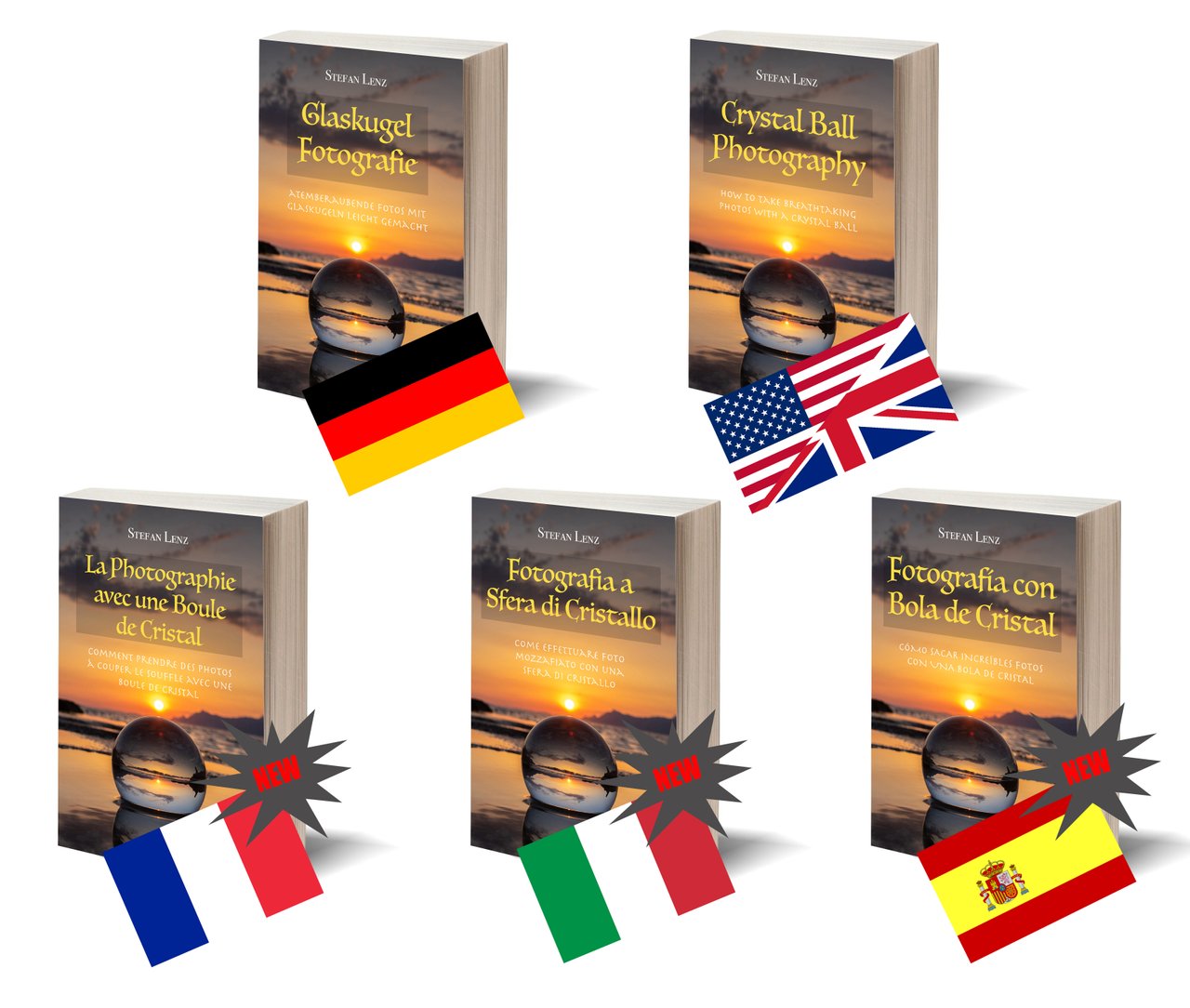
If you want to know more about crystal ball photography, I'd like to recommend you my short guide book about this topic, in which I have summarized all worth knowing information about the photographic work with crystal balls. Besides some creative ideas you will also get some tips and tricks that could help you a lot. I offer both an ebook and a paperback version. The book is available in 5 languages. Just click on your language if you are interested:
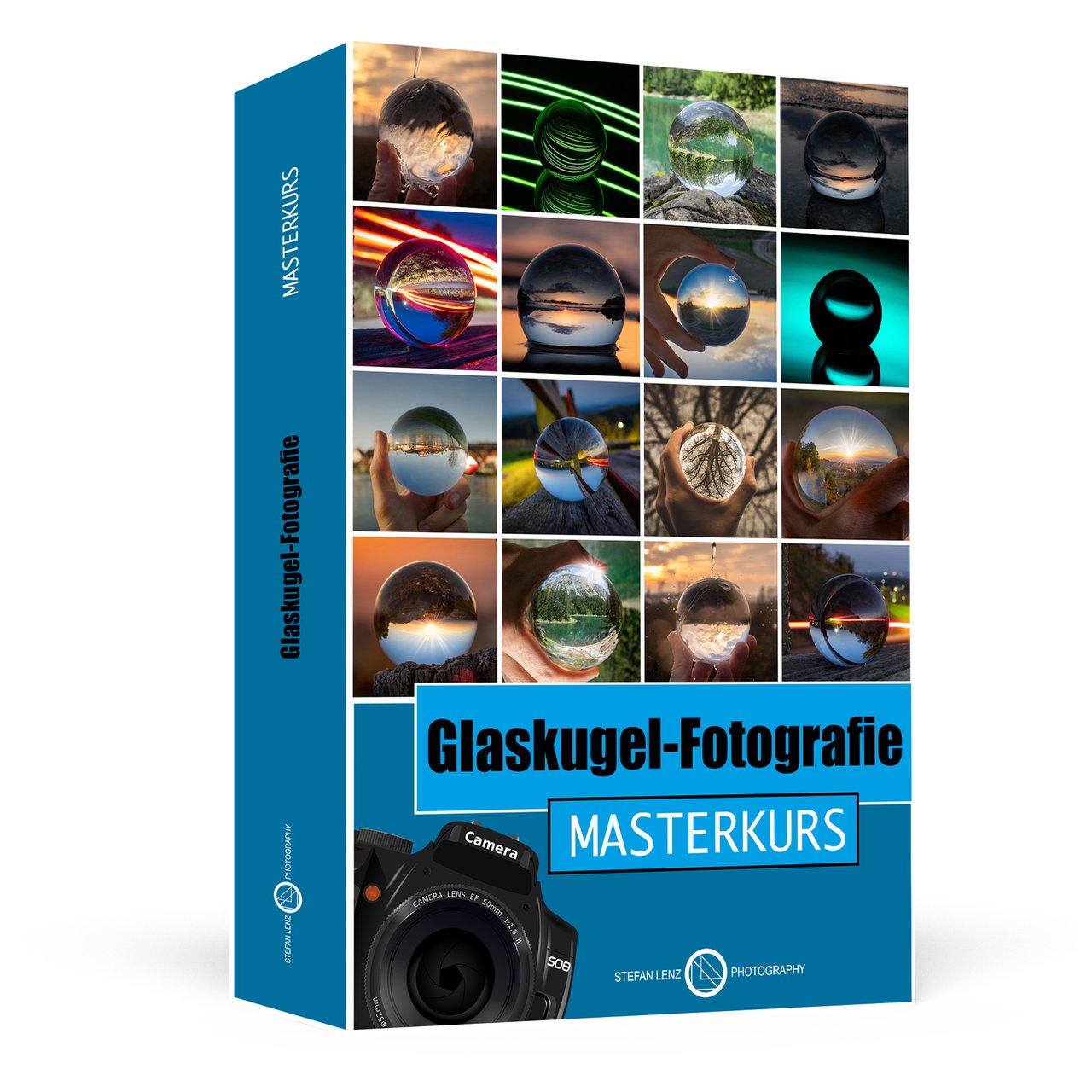.jpg)
Wenn ihr wissen wollt, wie ihr diese Fehler am besten vermeidet und in kürzester Zeit lernen wollt, selbst wunderschöne Glaskugel-Aufnahmen zu erzielen, dann möchte ich euch meinen neuen „Glaskugel-Fotografie MASTERKURS" empfehlen. Hier findet ihr ein Video, in dem ich euch alle Details zum Kurs erkläre:
See you soon/Bis bald!
Stefan

